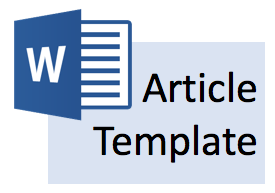Pengaruh Peer Instruction Flipped Classroom Terhadap Hasil Belajar Ekonomi Kelas XI BDP Di SMK Negeri 1 Surakarta
Abstract
Keywords
Full Text:
PDF (Bahasa Indonesia)References
Adhitiya, E. N., Prabowo, A., & Arifudin, R. (2015). Studi Komparasi Model Pembelajaran Traditional Flipped Dengan Peer Instruction Flipped Terhadap Kemampuan Pemecahan Masalah. Unnes Journal of Mathematics Education, 4(2), 116–126. https://doi.org/10.15294/ujme.v4i2.7451
Alammary, A., Sheard, J., & Crbone, A. (2014). Blended Learning in Higher Education: Three Different Design Approaches. Australasian Journal of Educational Technology, 30(4), 440– 454. https://doi.org/10.14742/ajet.693
Anitah, S. (2013). Teknologi Pembelajaran. Yuma Pustaka.
Arikunto, S. (2013). Prosedur Penelitian: Suatu Pendekatan Praktik. Rineka Cipta.
Bergmann, J., & Sams, A. (2012). Flip Your Classroom: Reach Every Student in Every Class Every Day. The International Society For Technology In Education.
Choiroh, A. N. L., Ayu, H., & Pratiwi, H. . (2018). Pengaruh Model Pembelajaran Flipped Classroom Menggunakan Metode Mind Mapping terhadap Prestasi dan Kemandirian Fisika. Jurnal Pendidikan Fisika, 7(1).
Pangondian, R. A., Santosa, I. P., & Nugroho, E. (2019). Faktor - Faktor Yang Mempengaruhi
Kesuksesan Pembelajaran Daring Dalam Revolusi Industri 4.0. Seminar Nasional Teknologi Komputer & Sains (Sainteks), 56–60. https://seminar-id.com/semnas-sainteks2019.html
Rusdi, Evriyani, D., & Praharsih, D. K. (2016). Pengaruh Model Pembelajaran Peer Instruction Flip dan Flipped Classroom Terhadap Hasil Belajar Kognitif Siswa Pada Materi Sitem Ekskresi. Biosfer: Jurnal Pendidikan Biologi, 9(1), 15–19.
_PENGARUH_GROUP_INVESTIGATION_BERBASIS_SIGIL_DAN_MOTIVASI_BELAJAR_TERHADAP_HASIL_BELAJAR_BIOLOGI.pdf (researchgate.net)
Santoso, S. (2013). Pengaruh Model Pembelajaran Kolaboratif Dan Motivasi Belajar Terhadap Peningkatan Hasil Belajar Fisika Siswa Kelas X Sma Negeri 1 Purwantoro Wonogiri, Jawa Tengah. Berkala Fisika Indonesia : Jurnal Ilmiah Fisika, Pembelajaran Dan Apliksinya, 5(1), 15–19.
Shohib, & Anastyasari, Y. (2017). Pengaruh Model Pembelajaran Flipped Classroom Terhadap Prestasi Belajar SiswaPelajaran Rancang Bangun Jaringan Di SMK Negeri 3 Buduran Sidoarjo. Jurnal IT-Edu, 2(2), 26–35.
Sookoo-Singh, N., & Boisselle, L. N. (2018). How does the “Flipped Classroom Model” Impact on Student Motivation and Academic Achievement in a Chemistry Classroom? Science Education International, 29(4), 201–212. https://doi.org/10.33828/sei.v29.i4.2
Suits, J. P. (2015). Design of Dynamic Visualizations to Enhance Conceptual Understanding in Chemistry Courses. In J. G. Martinez & E. S. Torregrosa (Eds.), Chemistry Education: Best Practices, Opportunities and Trends (First Edit, pp. 595–620). Wiley-VCH Verlag GmbH & Co. KGaA. https://doi.org/10.1002/9783527679300.ch24
Susanto, A. (2014). Teori Belajar dan Pembelajaran. Kencana.
Turpin, C. M. (2018). Blended learning and its effect on student achievement. An action research study [University of South Carolina]. https://scholarcommons.sc.edu/etd/5104/
Walberg, H. J. (1982). Educational Productivity: Theory, Evidence, and Prospects. Australian Journal of Education, 26(2), 115–122. https://doi.org/10.1177/000494418202600202
Yulietri, F., Mulyoto, & S, L. A. (2015). Model Flipped Classroom dan Discovery Learning. Teknodika, 13(2), 5–17.
Refbacks
- There are currently no refbacks.


